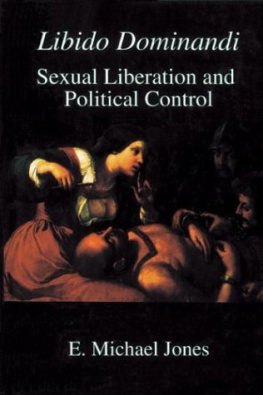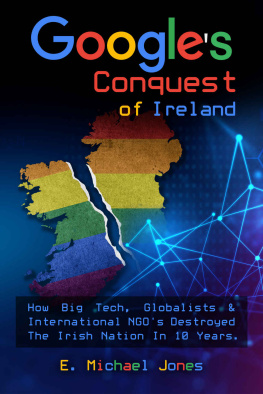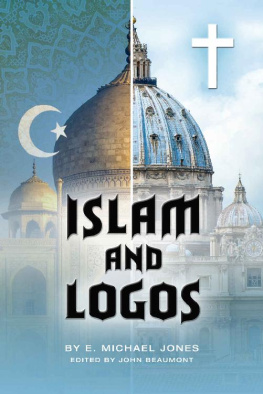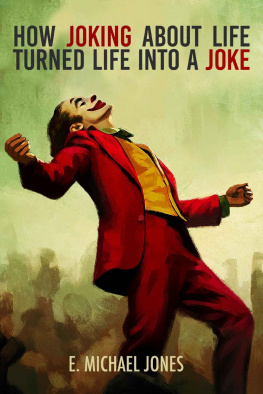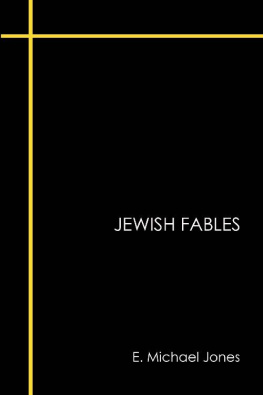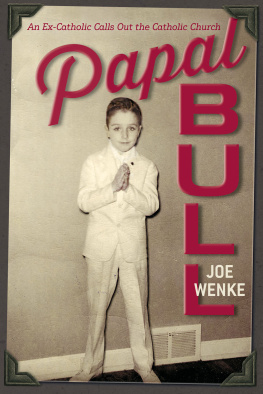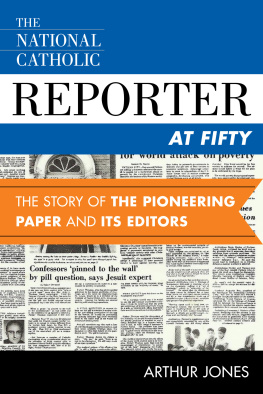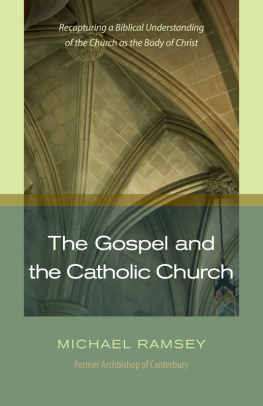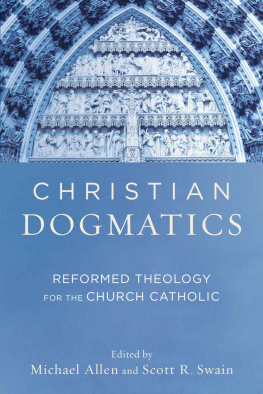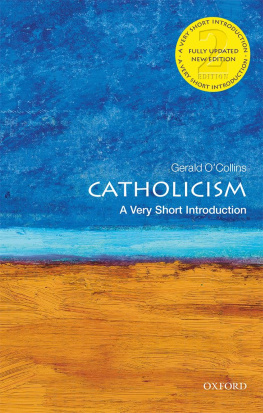E. Michael Jones - The Catholic Church and the Cultural Revolution
Here you can read online E. Michael Jones - The Catholic Church and the Cultural Revolution full text of the book (entire story) in english for free. Download pdf and epub, get meaning, cover and reviews about this ebook. year: 2016, publisher: Fidelity Press, genre: History / Science. Description of the work, (preface) as well as reviews are available. Best literature library LitArk.com created for fans of good reading and offers a wide selection of genres:
Romance novel
Science fiction
Adventure
Detective
Science
History
Home and family
Prose
Art
Politics
Computer
Non-fiction
Religion
Business
Children
Humor
Choose a favorite category and find really read worthwhile books. Enjoy immersion in the world of imagination, feel the emotions of the characters or learn something new for yourself, make an fascinating discovery.

- Book:The Catholic Church and the Cultural Revolution
- Author:
- Publisher:Fidelity Press
- Genre:
- Year:2016
- Rating:5 / 5
- Favourites:Add to favourites
- Your mark:
- 100
- 1
- 2
- 3
- 4
- 5
The Catholic Church and the Cultural Revolution: summary, description and annotation
We offer to read an annotation, description, summary or preface (depends on what the author of the book "The Catholic Church and the Cultural Revolution" wrote himself). If you haven't found the necessary information about the book — write in the comments, we will try to find it.
The Catholic Church and the Cultural Revolution — read online for free the complete book (whole text) full work
Below is the text of the book, divided by pages. System saving the place of the last page read, allows you to conveniently read the book "The Catholic Church and the Cultural Revolution" online for free, without having to search again every time where you left off. Put a bookmark, and you can go to the page where you finished reading at any time.
Font size:
Interval:
Bookmark:
Fidelity Press
206 Marquette Avenue
South Bend, Indiana 46617
www.culturewars.com
Cover image used under license from Shutterstock.com
Copyright, 2016, Fidelity Press

In 1976 a lawyer by the name of Leo Pfeffer came to Philadelphia and gave a talk in which he boasted that the Enlightenment, or what he called secular humanism, had triumphed in its culture war with the Catholic Church, its main opponent. What is more, Pfeffer was correct in his opinion. The culture of America had changed radically by this time. The only question that remained was whether the victory would be a permanent one or not. Well, we Catholics know the answer to that question, dont we? We live in a guaranteed Church, one that is vouched for by almighty God, his Incarnate Son, and the Holy Spirit. But we do know also that there will be great trials that we shall have to face, just as our forebears in the Faith had to do. These may be long-standing and cause many to be lost to the same Faith. But God is in charge and it is certain that his holy Church will win through in the course of time.
Dr. E. Michael Jones has been in the forefront of the ongoing debate concerning the culture wars between the Church and the Enlightenment, and in this book he tells the story relating to this as it happened over approximately the last sixty years, drawing some important conclusions. He begins by analyzing the fundamental nature of that secular humanism that has become so powerful during this period. Pfeffers account is undoubtedly the most accurate. Pfeffer goes so far as to name names and has no hesitation in doing so. After all he played a leading role in the relevant litigation that brought about these changes. And from the time of his growing up he developed a hatred for the Catholic Church and determined to act against it in every way he could.
The book also outlines the earlier culture wars, known of course as the Kulturkampf , which took place in Germany in the late nineteenth century. This gives us an opportunity to compare the effect of different social structures on different societies and gives us a focus through which to examine the contemporary case.
The battle in America was fought over three areas: schools and education; obscenity, in particular in respect of movies; and (most important of all) the family and sexuality, focusing particularly on contraception and abortion.
One of the most significant characters was John Cardinal Krol, one time Archbishop of Philadelphia, who occupied several positions of great significance in respect of the subject of this book. Dr. Jones is the biographer of Cardinal Krol and so has had access to a considerable amount of documentation relating to these topics.
The general introduction contained in chapter one concludes with an examination of the significance of the law and the courts in the context of the events covered, and the different legal theories of Natural Law and Legal Positivism espoused by the respective sides to the conflict.
Chapter two of the book looks at certain matters stemming from the Second Vatican Council, which took place from 1962 to 1965. It notes the highpoint of Catholic influence. It then reviews the state of the Church at the time of the death of Pope Pius XII and the desire for a Council argued for even, contrary to the mythology that has grown up, by so-called conservative Cardinals such as Cardinal Ottaviani, head of the Holy Office, and Cardinal Ruffini. It then shows how the preparatory documents drafted before the Council were based on a true recognition of the problems facing the Church. These documents were to be rejected by the Council Fathers. However, as Dr. Jones has shown on several occasions, the documents finally promulgated by the Council must be accepted as they come within the authority of the Church. Of course, they must be accepted in the light of Tradition, and this is very different from the frequently made statements by liberal progressives supporting a so-called spirit of Vatican II, which in many cases was far away from the intentions of the Council Fathers themselves.
Chapters three and four examine the main sources of the attempted subversion of the Church at this time and later. Chapter three deals with Wilhelm Reich. Reich was a Jewish Freudian Communist who was one of the leading theorists of the New Lefts use of sexual revolution as a form of covert political and social control. His main opponent was the Catholic Church. Reich discovered early on a fundamental point that became the constant theme of his writings. This was that debating the existence of God with a seminarian got nowhere in terms of the revolution. However, if, to use his example, the seminarian became involved in sexual activity, then the idea of God would evaporate from his mind. That was the theory of sexual revolution, articulated by Reich during the 1930s and promoted by his American disciples during the 50s and 60s. The revolutionary praxis was also based on psychology, applied psychology of the Rogerian sort. Chapter four deals with this. Carl Rogers was the man who destroyed the Immaculate Heart nuns of Los Angeles by using psychology as the validator of appetite. Another subversive influence, also taken up in chapter four, was Abraham Maslow who did similar work, with similar consequences, at other religious orders. Being taken in by Reich, Rogers, and Maslow, the Catholic Church went a long way towards abandoning traditional sexual discipline in its religious orders because the dominant culture of control through appetite said that it would improve religious life. Instead, the release of moral control destroyed religious life, which has led some to think that the destruction was intentional. Chapter four goes on to deal with a particularly notable example of this, the case of Fr. Eugene Kennedy.
Chapter five deals with the battles that the Church had to fight with the various media authorities, notably Hollywood. It tells the story of the saga of the Hollywood Production Code and the Legion of Decency, through which the Catholic Church worked to protect the faithful, and people generally, from obscene movies turned out by the media agencies. Sadly, after several years of relative success, the Church finally lost this battle with the forces of secularism.
These opponents of the Catholic Church were not Catholics themselves. However, Dr. Jones has shown in numerous books and articles the existence of a fifth column within the Church itself. Much of this involves the University of Notre Dame and its president for many years, Fr. Theodore Hesburgh. The book deals with this in chapters six and seven. The key moves of the dissidents were a) the removal of the university from the oversight of the Catholic Church and the placing of it under the direction of a lay board of trustees; b) the attempts of Fr. Hesburgh, in collaboration with the Rockefellers, to bring the Churchs teaching on birth control into line with the new sexual consensus the Rockefellers were forging; and c) the Land o Lakes meeting which ratified Hesburghs alienation of Church property followed, in a matter of weeks, by the bishops caving in on the case of Charles Curran at Catholic University, a case also involving sexual standards. Because of Dr. Jones particular knowledge of the situation at the University of Notre Dame, the book examines in some detail the collapse of Catholic standards there. Chapter six outlines the campaign run there by the Rockefellers and Planned Parenthood, aided and abetted by Fr. Hesburgh, to subvert the Churchs teaching on contraception. Chapter seven takes the case of the late Fr. Richard McBrien as representative of the several theological dissidents at this time, and looks at his malign influence. This is followed by an account of the notorious Land o Lakes statement, another production of Fr. Hesburgh.
Font size:
Interval:
Bookmark:
Similar books «The Catholic Church and the Cultural Revolution»
Look at similar books to The Catholic Church and the Cultural Revolution. We have selected literature similar in name and meaning in the hope of providing readers with more options to find new, interesting, not yet read works.
Discussion, reviews of the book The Catholic Church and the Cultural Revolution and just readers' own opinions. Leave your comments, write what you think about the work, its meaning or the main characters. Specify what exactly you liked and what you didn't like, and why you think so.

